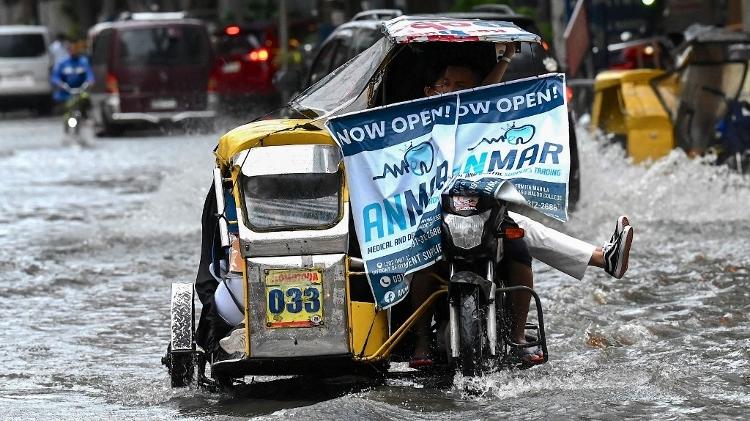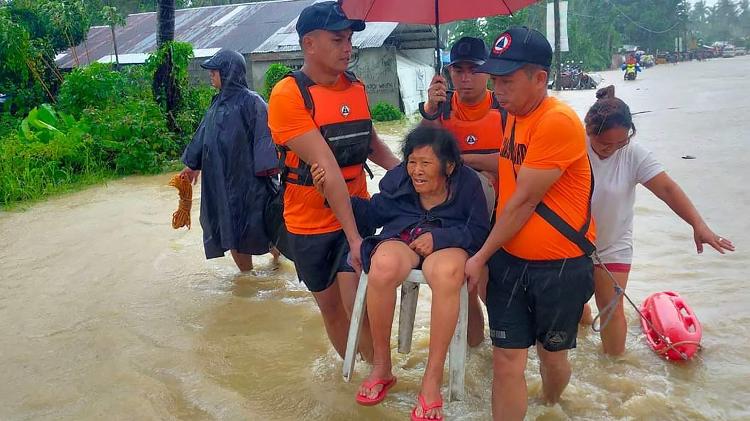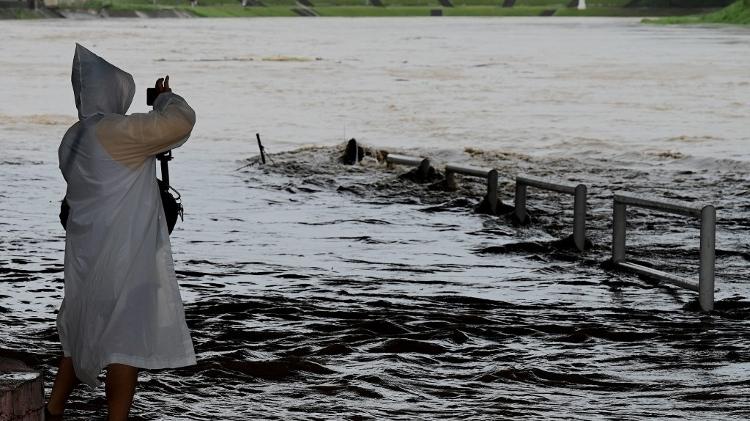Tropical Storm Nalgae struck the Philippines on Saturday (29), after causing floods and landslides that killed at least 45 people, according to a report by authorities.
An hour after the hurricane struck the sparsely populated island of Catanduanes before dawn, it struck the archipelago’s main island, Luzon, with maximum winds of 95 km/h.
The devastation began much earlier, with heavy rains flooding mostly rural areas on the southern island of Mindanao on Thursday, followed by mudslides and deadly flooding on Friday.
Civil Defense officials significantly lowered the death toll on Saturday – from 72 to 45 – and reported 40 deaths in Mindanao, while five more died in other parts of the country.
Heavy rains triggered landslides and debris-laden flooding in some areas that wiped out entire families.
Rescuers focused on the southern city of Kusiong. Excavators dug up large areas of a thick layer of gray limestone and brown mud while anxious relatives awaited news.
Parts of a nearby mountain collapsed in the city on Friday, and 14 bodies have already been recovered. A few people are missing.
“It could be more than a hundred,” Lester Sinsuat, mayor of the town of Datu Odin Sinsuat, told AFP when asked about the death toll.
“This is already a rescue operation because the city has been submerged in rocks and mud for over a day,” regional civil defense chief Naguib Sinarimbo told AFP, choosing not to estimate the death toll.
Flooding has also been reported in the central Philippines, although no deaths have been reported in the region.
– “Why are there so many victims?” –
Footage released by the Coast Guard showed rescuers using a refrigerator as a makeshift boat to evacuate children from a flooded community on the central island of Leyte.
The meteorologist warned that Nalgae could hit the capital, Manila, where more than 13 million people live, with “heavy and sometimes torrential rains”.
“Extensive flooding and landslides caused by rain are expected,” he added, although there is minimal risk of large waves in coastal areas.
“Our estimation is that this hurricane is very strong, so we need to be well prepared,” said Rafaelito Alejandro, national director of Civil Defense.
The official also urged residents in the storm’s path to stay indoors. “If it’s not necessary or important, we should avoid going out today (Saturday) because it’s dangerous,” he warned.
Philippine President Ferdinand Marcos Jr. At a televised meeting on Saturday, he rebuked Civil Defense and local officials over the large number of casualties in Mindanao.
The President said, “It will be important for us to go back and see why this happened. Why don’t we get them out of there? Why are there so many deaths?” the president asked.
According to Civil Defense, more than 7,000 people were evacuated before the hurricane made landfall.
The civil aviation office said it has canceled more than 100 flights so far.
A whirlwind kicked off a long weekend for the country’s Day of the Dead, with millions visiting the graves of their loved ones.
The Philippines suffers an average of 20 major storms a year, leaving hundreds dead and vast regions in perpetual poverty. Scientists warn that these storms are getting stronger as global warming increases.
cgm/qan/mas/cjc/dl/an/mis/an/aa
© Agence France-Press
source: Noticias


